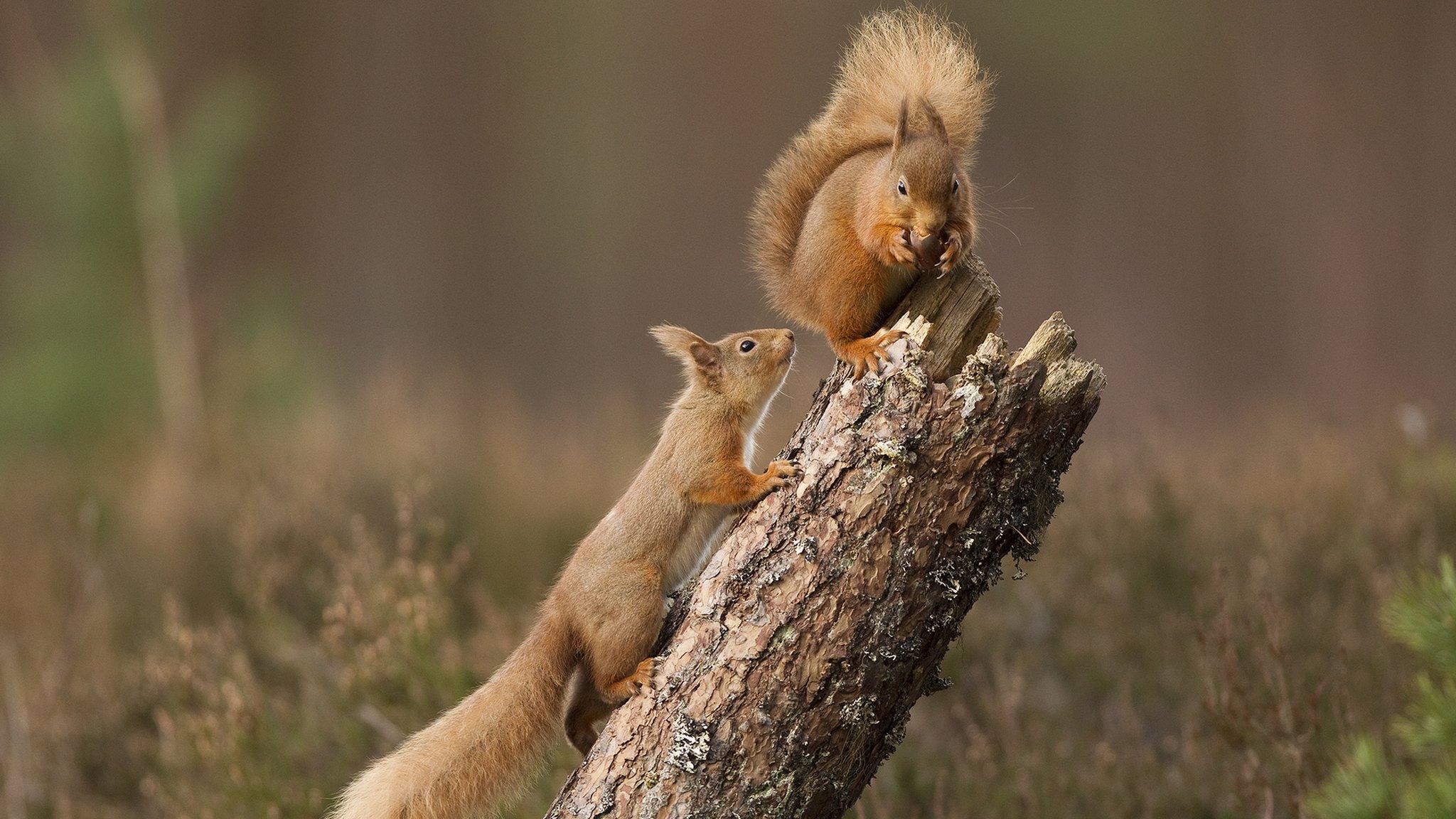Scientists to study relocated red squirrels' hair
- Published

Red squirrels have relocated from Moray and near Inverness to woods in the north west Highlands
The health and genetics of red squirrels reintroduced to Highland woodlands are to be studied by University of Edinburgh scientists.
Findhorn-based charity Trees for Life has been relocating squirrels to areas where they were once found, including woods near Shieldaig and Gairloch.
Hair samples taken from squirrels before they were released are to be analysed.
The results could give information on diseases that affect the animals.
Alan McDonnell, Trees for Life's conservation manager, said: "Learning more about diseases, parasites and genetic variability is vital for ensuring a long-term future for the UK's red squirrels.
"The research may also shed light on how genetic diversity is distributed across Scotland and how red squirrel populations disperse into available habitat."
'Isolated fragments'
Dr Rob Ogden, of the university's Royal (Dick) School of Veterinary Studies, said: ''The university is very happy to be providing scientific support to Trees for Life's red squirrel reintroduction programme.
"We are committed to ensuring that wildlife conservation in Scotland has access to the latest scientific techniques, to increase the chances of project success over the long term.''
Since 2015, Trees for Life has relocated 140 red squirrels from around Inverness and Moray to "isolated fragments" of forest where reds would once have lived.
As well as Shieldaig and Gairloch, squirrels have been released on the Coulin Estate near Kinlochewe, Plockton, Inverewe, Reraig peninsular, Attadale and Letterewe.
Young squirrels have already been seen at Letterewe and Gairloch, Trees for Life's 2018 release sites.
The charity said the squirrels were also dispersing well. A population has become established at Torridon, just over nine miles (15km) from the release site at Shieldaig.
- Published8 August 2018

- Published6 November 2017
